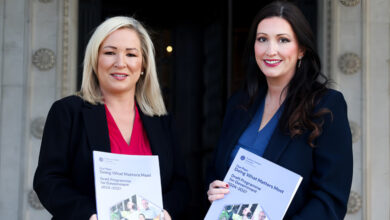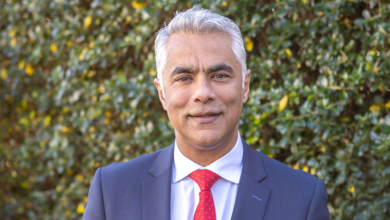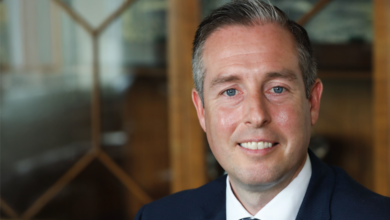Titanic centenary
Peter Cheney weighs up whether the Titanic centenary had the correct focus or sense of dignity.
By any measure, the construction of the Titanic was a considerable achievement for the workers of Harland and Wolff: 46,328 tons in weight, 269m long, 32m and 28m wide.
Opening the Titanic Belfast building, Peter Robinson said that it “marks not just a commemoration of the internationally recognised story, but a new beginning for Northern Ireland on the world stage.” Martin McGuinness added: “Just as the shipyard workers and the people of Belfast were proud of the Titanic 100 years ago, they and indeed all the people of the North can be proud of this wonderful signature building.”
Several critics, though, have claimed that celebration has overtaken commemoration in the way that Belfast has chosen to mark the centenary.
The exact number of fatalities is unclear due to aliases, stowaways and cancelled bookings. The official British investigation recorded 1,514 deaths: 821 passengers and 693 crew. The highest mortality rates were among second class men (92 per cent) and third class men (84 per cent).
Historian Greg Ward sees the disaster as the “the ultimate news story, when it had only just become possible for news to race around the world.” Poignantly, he adds that a fully trained crew with sufficient lifeboats could have saved all lives on board. There is also no single factual account of the night, due to the contradictory evidence given by the 710 survivors.
Former Queen’s University history lecturer John Lynch has recorded the history of all 1,589 ships built in Belfast in his book ‘Belfast Built Ships’. He ventures that the Titanic centre could be “a £95 million white elephant” as people are unlikely to make repeat visits and the city’s wider maritime history may go untold.
The wreck’s discoverer, Robert Ballard, has spoken of some regrets about finding the Titanic because of its subsequent exploitation. “That’s my father’s grave,” one survivor told him. “Don’t disturb it.” Ballard has, though, built up a rapport with Belfast and is pleased that the city is “finally proud” of having built “an amazing ship”. He valued being in its home city for the centenary weekend.
News Letter journalist Billy Kennedy recognised the centenary’s importance in attracting visitors but criticised its “commercial opportunism” and “slick pamphlet propaganda.” Instead, he called for quiet and sombre reflection. The sinking was a “a tragic happening that should be quietly dispatched to the archives for historians and nautical anoraks to digest.”
Likewise, William Neill, a Belfast-born spatial planning professor at Aberdeen University, has questioned why the legacy should be linked to financial gain. Neill contrasted the rundown drawing offices with the shiny new attraction nearby. The MTV Titanic Sounds concert, taking place on the slipway just before the sinking’s centenary, “begs some questions of taste, respect and dignity no matter what the promotional hype.”
A Belfast City Council spokesman said that this particular event was designed to mark the building’s opening as a major tourist attraction, and was part of the “celebration strand”. He claimed that the festival was being “more than respectful” (e.g. the opening of the memorial garden) and was “satisfied that we have struck the right balance.”






